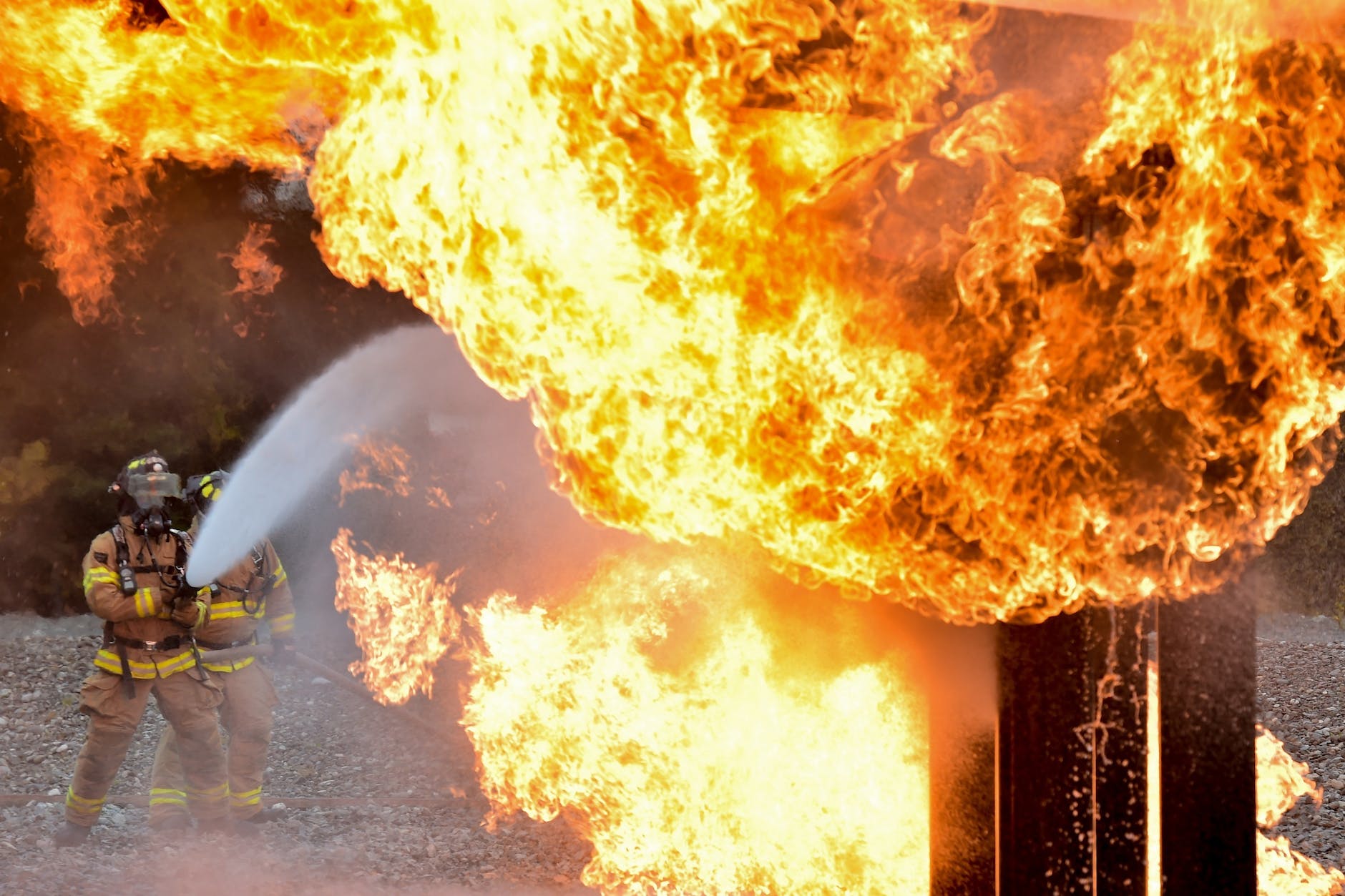
Fire Safety Standards as per OSHA
Fire Safety Standards : In today’s world, workplace safety is of paramount importance, and fire safety is a critical aspect of ensuring the well-being of employees and the protection of property. The Occupational Safety and Health Administration (OSHA) plays a pivotal role in setting fire safety standards to prevent workplace fire hazards. In this article, we will delve into the key fire safety standards as outlined by OSHA, offering you a comprehensive understanding of how these standards contribute to a safer work environment.
Introduction to OSHA and Fire Safety
OSHA, a federal agency under the United States Department of Labor, is responsible for establishing and enforcing safety regulations to safeguard workers from various hazards in the workplace. One of the key areas OSHA addresses is fire safety. Their guidelines provide employers with a roadmap to ensure that the workplace is equipped with the necessary fire prevention measures, emergency plans, and employee training.
The Significance of Fire Prevention Plans
A fundamental element of OSHA’s fire safety standards is the implementation of fire prevention plans. These plans are comprehensive strategies designed to minimize fire risks and ensure a prompt response in case of a fire emergency. Developing a detailed fire prevention plan involves assessing potential fire hazards, establishing safe practices, and designating responsible personnel to execute the plan effectively.
Employee Training and Emergency Drills
Proper training is crucial for employees to respond effectively during a fire emergency. OSHA mandates regular fire safety training sessions, which cover topics such as recognizing fire hazards, understanding evacuation procedures, and proper usage of fire extinguishers. Conducting regular fire drills helps simulate real-life emergency situations, ensuring that employees are well-prepared to evacuate safely.
Flammable and Combustible Materials Handling
Flammable and combustible materials pose significant fire risks in various industries. OSHA’s standards outline specific guidelines for the safe storage, handling, and usage of these materials.
Proper Storage and Handling Procedures
Storing flammable liquids and gases in appropriate containers and cabinets is a critical aspect of fire safety. OSHA regulations stipulate that these materials must be stored away from ignition sources, in well-ventilated areas, and with clear labels indicating their contents.
Use of Flammable Liquids and Gases
Industries that utilize flammable liquids and gases must adhere to strict protocols to minimize fire hazards. This includes using explosion-proof equipment, installing proper ventilation systems, and implementing safeguards to prevent leaks or spills.
Electrical Fire Safety
Electrical malfunctions are a common cause of workplace fires. OSHA’s fire safety standards emphasize the proper use and maintenance of electrical equipment.
Wiring and Equipment Maintenance
Regular inspection and maintenance of electrical wiring and equipment are crucial to prevent electrical fires. Faulty wiring, overloaded circuits, and damaged equipment can lead to short circuits and sparks that can trigger fires.
Use of Electrical Appliances
Proper use of electrical appliances, such as computers, heaters, and machinery, is essential to prevent overheating and potential fire outbreaks. Employers must ensure that all appliances are in good working condition and are used according to manufacturer guidelines.
Exit Routes and Emergency Evacuations
Clear and accessible exit routes are pivotal to the safe evacuation of employees during a fire emergency.
Clear Pathways and Exit Signs
OSHA mandates that exit pathways should always be free from obstructions and adequately lit. Exit signs must be clearly visible and indicate the shortest route to safety.
Emergency Action Plan
Having a well-defined emergency action plan in place is crucial for minimizing chaos during a fire emergency. The plan should detail evacuation procedures, assembly points, and communication methods.
Fire Extinguishers and Suppression Systems
Fire extinguishers and suppression systems are critical tools for controlling and extinguishing fires quickly.
Types of Fire Extinguishers
Different types of fires require specific types of fire extinguishers. OSHA guidelines categorize fires into classes, and employers must provide the appropriate fire extinguishers based on the potential fire risks in their workplace.
Installation and Maintenance
Proper installation and regular maintenance of fire extinguishers and suppression systems ensure they function effectively when needed. Inspection schedules and records of maintenance activities should be kept up-to-date.
Maintenance of Fire Detection Systems
Early detection of fires can make a significant difference in preventing extensive damage. OSHA emphasizes the importance of fire detection systems.
Smoke Alarms and Detectors
Smoke alarms and detectors are critical components of fire detection systems. Regular testing and battery replacements are essential to ensure their functionality.
Regular Testing and Upkeep
Employers should schedule routine tests of fire detection systems to confirm their accuracy. Additionally, regular upkeep and calibration of these systems are necessary to avoid false alarms.
Fire Safety Training for Employees
Proper training equips employees with the knowledge and skills to respond effectively in a fire emergency.
Understanding Fire Classes
Employees should be educated about different fire classes and the appropriate methods for extinguishing each type. This knowledge helps prevent the use of incorrect extinguishing agents that could exacerbate the fire.
Proper Use of Firefighting Equipment
Employees should be familiar with the location and use of firefighting equipment, such as fire extinguishers and fire hoses. Hands-on training sessions can enhance their confidence in using these tools.
Inspection and Maintenance Records
Maintaining accurate records of fire safety inspections and maintenance activities is a requirement under OSHA’s standards.
Documenting Fire Safety Measures
Employers must document their fire prevention plans, fire drills, equipment inspections, and any corrective actions taken. These records serve as evidence of compliance and can be valuable during audits.
Ongoing Compliance and Updates
Fire safety measures should evolve with changes in the workplace layout, equipment, or processes. Regular reviews of fire prevention plans and continuous compliance efforts are essential to ensure the highest level of safety.
OSHA’s Enforcement of Fire Safety Standards
OSHA takes fire safety seriously and conducts inspections to ensure employers are following the established standards.
During inspections, OSHA checks for adherence to fire prevention plans, employee training records, and the presence and functionality of firefighting equipment. Non-compliance can result in penalties, making it imperative for employers to prioritize fire safety.
Conclusion
Fire safety standards as per OSHA are designed to protect lives, property, and businesses. By adhering to these standards, employers create a safer work environment and reduce the risk of devastating fire incidents. Through comprehensive fire prevention plans, proper handling of flammable materials, regular maintenance of equipment, and employee training, workplaces can be well-prepared to prevent, detect, and respond to fire emergencies effectively.
FAQs
1. What is OSHA’s role in fire safety?
OSHA sets and enforces fire safety standards to ensure workplace safety and prevent fire hazards.
2. Why are fire prevention plans essential?
Fire prevention plans outline strategies to minimize fire risks and ensure a prompt response during fire emergencies.
3. How often should fire drills be conducted?
Fire drills should be conducted at least annually, with additional drills for new employees and changes in evacuation procedures.
4. What types of fires do different extinguishers handle?
Different fire extinguishers are designed to handle specific fire classes: A, B, C, D, and K.
5. What happens if a workplace doesn’t comply with OSHA’s fire safety standards?
Non-compliance with OSHA’s fire safety standards can lead to penalties and legal consequences for the employer.
























